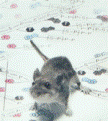Papers in the Biological Sciences

Jay F. Storz Publications
Document Type
Article
Date of this Version
2015
Citation
Published in American Journal of Physiology — Regulatory, Integrative and Comparative Physiology vol. 309, no. 9 (1 November 2015), pp. R1178–R1191; doi: 10.1152/ajpregu.00327.2015 ; PubMed PMID 26354849
Abstract
Available data suggest that snake hemoglobins (Hbs) are characterized by a combination of unusual structural and functional properties relative to the Hbs of other amniote vertebrates, including oxygenation-linked tetramer-dimer dissociation. However, standardized comparative data are lacking for snake Hbs, and the Hb isoform composition of snake red blood cells has not been systematically characterized. Here we present the results of an integrated analysis of snake Hbs and the underlying α- and β-type globin genes to characterize 1) Hb isoform composition of definitive erythrocytes, and 2) the oxygenation properties of isolated isoforms as well as composite hemolysates. We used species from three families as subjects for experimental studies of Hb function: South American rattlesnake, Crotalus durissus (Viperidae); Indian python, Python molurus (Pythonidae); and yellow- bellied sea snake, Pelamis platura (Elapidae). We analyzed allosteric properties of snake Hbs in terms of the Monod-Wyman-Changeux model and Adair four-step thermodynamic model. Hbs from each of the three species exhibited high intrinsic O2 affinities, low cooperativities, small Bohr factors in the absence of phosphates, and high sensitivities to ATP. Oxygenation properties of the snake Hbs could be explained entirely by allosteric transitions in the quaternary structure of intact tetramers, suggesting that ligation-dependent dissociation of Hb tetramers into αβ-dimers is not a universal feature of snake Hbs. Surprisingly, the major Hb isoform of the South American rattlesnake is homologous to the minor HbD of other amniotes and, contrary to the pattern of Hb isoform differentiation in birds and turtles, exhibits a lower O2 affinity than the HbA isoform.
Included in
Ecology and Evolutionary Biology Commons, Molecular Biology Commons, Molecular Genetics Commons, Systems and Integrative Physiology Commons


Comments
Copyright © 2015 American Physiological Society. Used by permission.